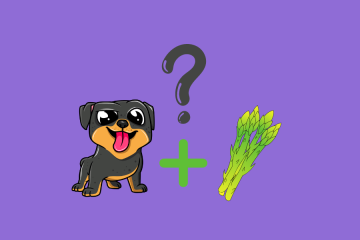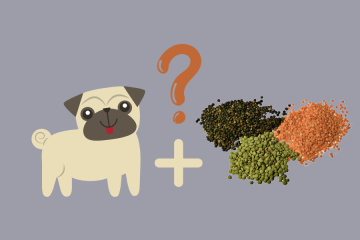Ever since I was a child, mango has been my favorite fruit! It’s sweet, juicy, and a perfect summertime snack. And, as you may guess, I would love to share it with my dog. So I researched: can dogs eat mango? This is what I found:
Key Takeaways
- Dogs can have mango (yay)!
- Mangoes are rich in vitamins which are essential for dogs.
- There are types of mangoes that can harm our pups.
- Unripe mangoes are an absolute no-no!
- It’s best to serve mango to dogs in moderation.
Can Dogs Eat Mango?
So, can dogs eat mango? Yes, mango is good for dogs, provided that you make sure to only give them ripe mango fruit of the right kind, as well as remove the seed before serving. As long as it is served in moderation, mango is a healthy and delicious fruit for your furry friend. So, go ahead and indulge your pup with this sweet treat, but make sure to also include plenty of other ingredients in their diet, too.
The Health Benefits of Mango for Dogs
There are plenty of benefits for dogs, mangoes can offer!
- Keep your pup’s immune system in prime condition with mango – a powerful source of vitamin C! This antioxidant helps shield cells from damage and fend off illnesses by blocking those pesky free radicals created when fending off bacteria & viruses. So give Fido the nutritious boost he needs to stay healthy and strong!
- Mango also contains beta-carotene, an antioxidant that helps protect against heart disease and cancer
- Mango is rich in vitamin B6, which helps with red blood cells production and maintenance, in turn facilitating carrying the oxygen throughout the body.
- Mango is low in calories but contain a lot of fiber, which can help with digestion.
- Mango also has a high water content, so it’s good for keeping your dog hydrated on hot days or after physical activity.
The Risks of Feeding Mango to Your Dog

Can dogs eat mango? The answer is not that simple. Although mangoes are a healthy snack for dogs and provide many health benefits, there are also some risks to feeding your dog mangoes.
- Mangoes can be high in sugar and calories, so you don’t want to give them too much, especially if your dog is prone to obesity or diabetes.
- Mangoes belong to the same family as poison ivy. And just like the vine, unripe mango contains a toxin called urushiol. This allergen can cause such problems as itching, rashes and swelling, especially around the eyes, nose and mouth. If you think your dog may have consumed unripe mango, contact a vet immediately.
- Enabling your pup to indulge in the sweet and succulent taste of mango might seem like a harmless pleasure, yet it’s crucial to remember that its small black stone contains cyanide – an extremely poisonous substance for canines.
- This extends beyond just digestion issues; too much ingestion could result in life-threatening symptoms such as seizures or difficulty breathing!
- Beyond potential toxicity, even smaller amounts eaten can cause discomfort from stomach upset all the way up through constipation – so limit those mango treats with caution.
Types of Mango That Are (Un)Safe for Dogs
If you’re going to feed your dog mangoes, then it’s important to make sure that you’re giving them the right type. There are some types of mangoes that are safe for dogs to eat, while others are not. The safest types of mangoes for dogs are varieties like Tommy Atkins, Haden, Keitt and Ataulfo. The unsafe types of mangoes for dogs include:
- Kensington Pride (also called Bowen): this type of mango is native to Australia, and it’s not safe for dogs because it contains a chemical called urushiol.
- Glenn Mango (also known as Irwin): these are large, red mangos that can be found in stores during the summer months. Just like the previous type, this one also contains urushiol.
- Kent: containing 27 grams of sugar per 100 grams, they can also cause digestive problems for some dogs.
- Francis: this variety has an extremely high sugar content and can cause blood sugar levels in your dog to spike.
Tips on Serving Mango to Dogs

When feeding your dog mango, it’s important to make sure that they are safe to eat. Here are some tips on how to do so:
- Make sure the mango is ripe and free from bruises or blemishes.
- Remove the pit before giving it to them (you can even peel the skin if your dog has trouble digesting it).
- Keep your furry friend safe by avoiding feeding them unripe mangoes, as these can contain toxins which could be harmful to dogs.
- Treat your pup to a cool, fruity snack this summer! Create small pieces of fruit as an incredible food topper that adds nutrition and flavor. Or take it up a notch by blending the fruit with water and ice cubes for the perfect pooch-friendly smoothie.
- Start your pup off with a tiny taste of mango and, if all goes well, build up to bigger portions over time. After offering it in moderation for several days or weeks – you might find that this juicy fruit has become one of their new favorite snacks!
Can Dogs Eat Mango Skin?
Can dogs eat mango skin? The answer is yes, dogs can eat the skin of a mango.It’s high in fiber and has many other nutrients that are good for your dog’s health. The only problem with giving your dog the skin is that it may be harder for them to digest than the flesh of the mango. If your dog has problems digesting the skin, then you can remove it before giving it to them.
Sarah Jameson is a journalist, reporter and a pet nutritionist. She is married to Peter, and they have two beautiful children, Zoey and Quinn. In her spare time, Sarah enjoys cooking for her family and playing snooker. She also loves spending time with her Scottish Terrier, Bobby.












